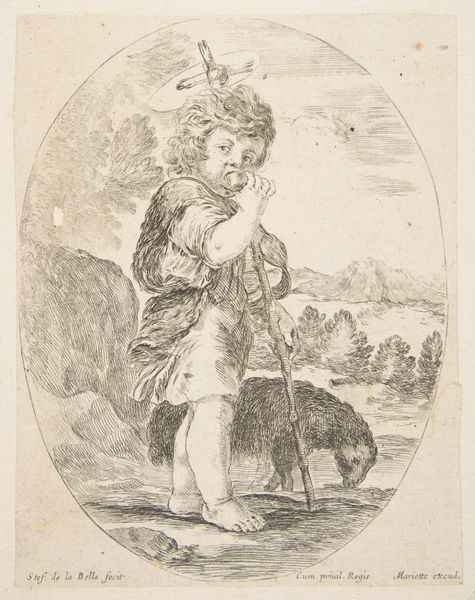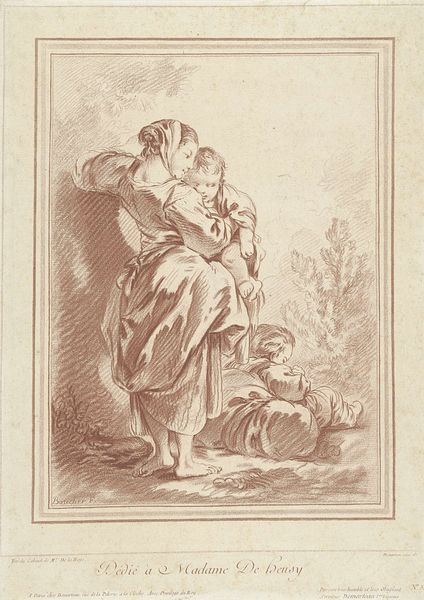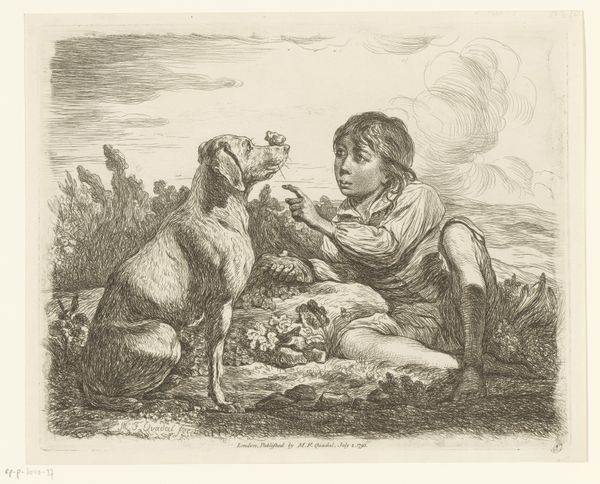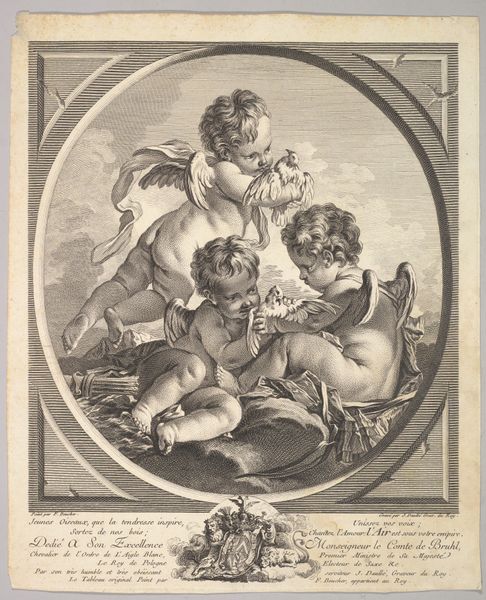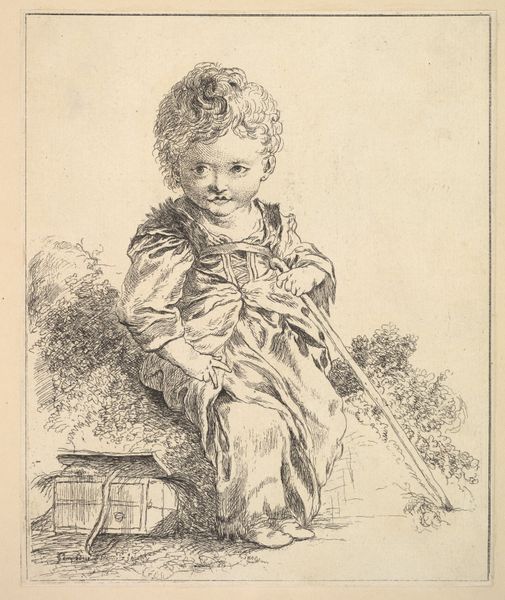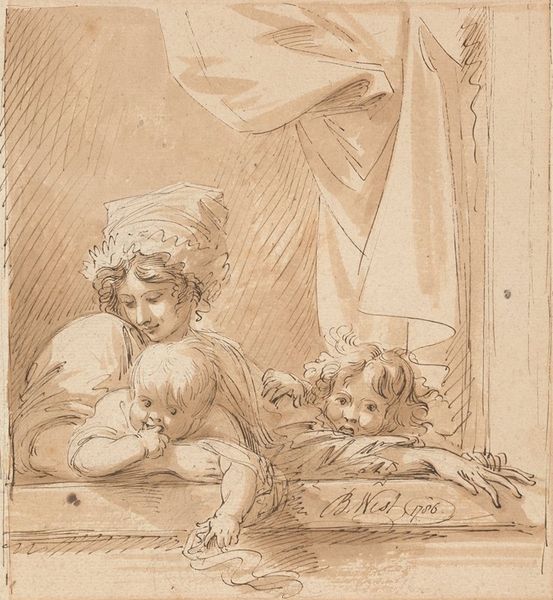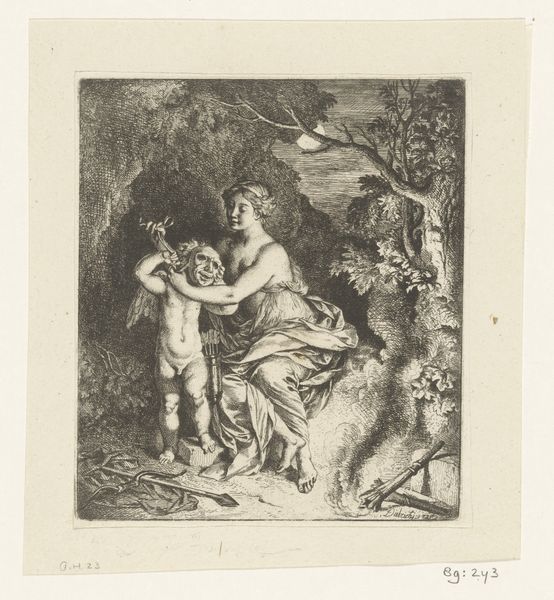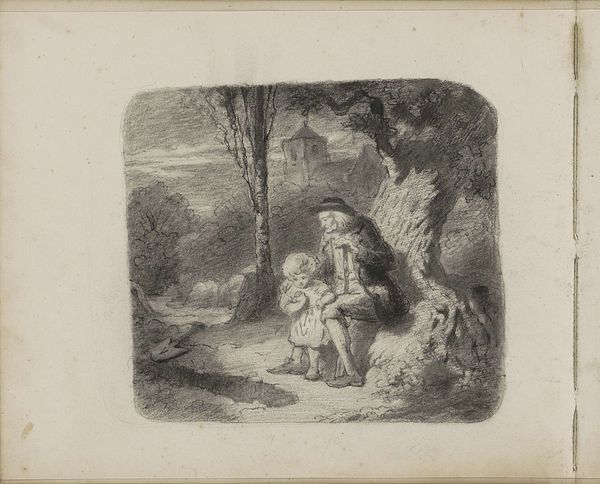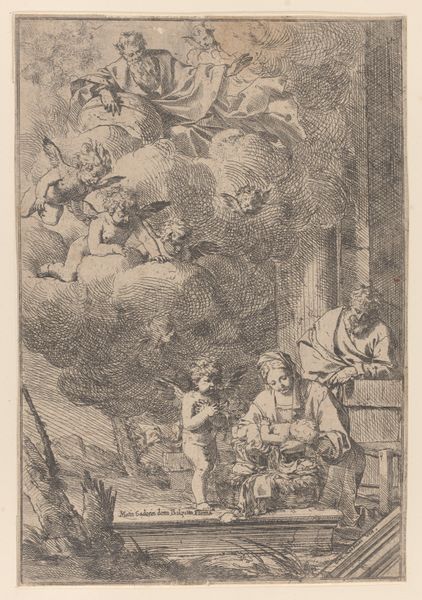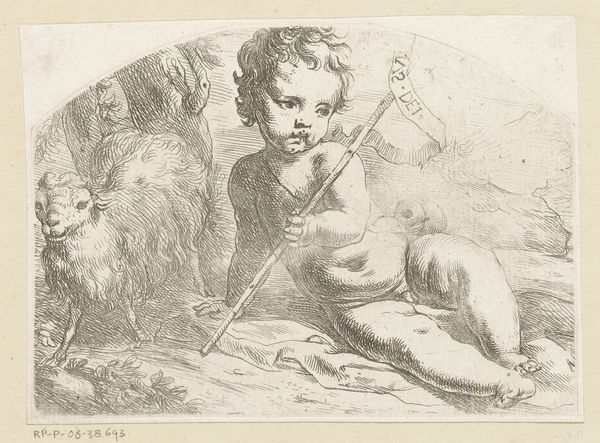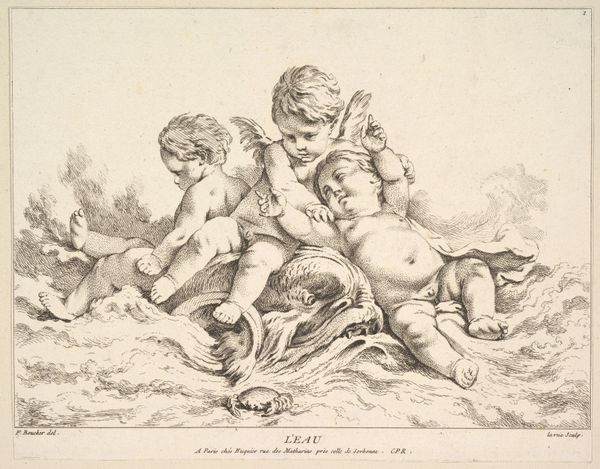
Child teaching a dog to sit, the child seated to left against a wall, teaching the dog to sit on its hind legs, another child embracing a dog to right in the background 1660 - 1664
0:00
0:00
drawing, print, etching
#
portrait
#
drawing
#
baroque
#
animal
# print
#
etching
#
dog
#
old engraving style
#
boy
#
genre-painting
#
italian-renaissance
Dimensions: Sheet: 6 1/16 x 4 5/16 in. (15.4 x 10.9 cm) Plate: 5 13/16 x 4 1/8 in. (14.8 x 10.4 cm)
Copyright: Public Domain
Editor: So this is Stefano della Bella's etching, "Child teaching a dog to sit," dating back to the 1660s. It's quite charming, in an everyday sort of way. What's your take on it? Curator: I think this image speaks volumes about the changing role of childhood and domesticity in 17th-century European society. What we're seeing is not just a depiction of children playing, but a glimpse into the emerging bourgeois values of nurturing and structured leisure. The very act of commissioning and collecting such a print suggests a shift in attitudes. Editor: Structured leisure, you say? Curator: Yes, think about it. Earlier, childhood was often viewed more pragmatically, as preparation for labor or religious life. But by della Bella's time, particularly among the growing middle class, childhood became a distinct phase worthy of cultivation. What is being communicated by sharing with and educating a dog? Editor: Well, teaching a dog seems... an activity linked to authority. You show it who is in charge by helping the dog meet requirements. Perhaps even about raising children? Curator: Precisely! The etching promotes a vision of domestic life as a sphere for moral and social development. Moreover, prints like these had a broad circulation, helping to disseminate those ideals. How do you think this circulation might have influenced behavior? Editor: By making these kinds of scenes, families, dogs more desirable? Something to strive for, perhaps? So this simple scene of a child and dog becomes a window into broader social shifts. Curator: Exactly. It's a potent reminder that art doesn't just reflect the world, it also shapes our understanding of it and potentially informs how we want to be perceived in the social sphere.
Comments
No comments
Be the first to comment and join the conversation on the ultimate creative platform.
